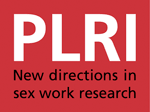presumptive treatment
Sex work is an important feature of the transmission dynamics of HIV within early, advanced and regressing epidemics in sub-Saharan Africa. HIV prevalence among sex workers and their clients is commonly 20 fold higher than the general population. Together, these factors may contribute to a differential in HIV transmission potential of more than 1000 times compared with lower-risk populations. Yet, in much of Africa, there is little evidence that transmission of HIV and other STIs in sex work settings has been controlled.

